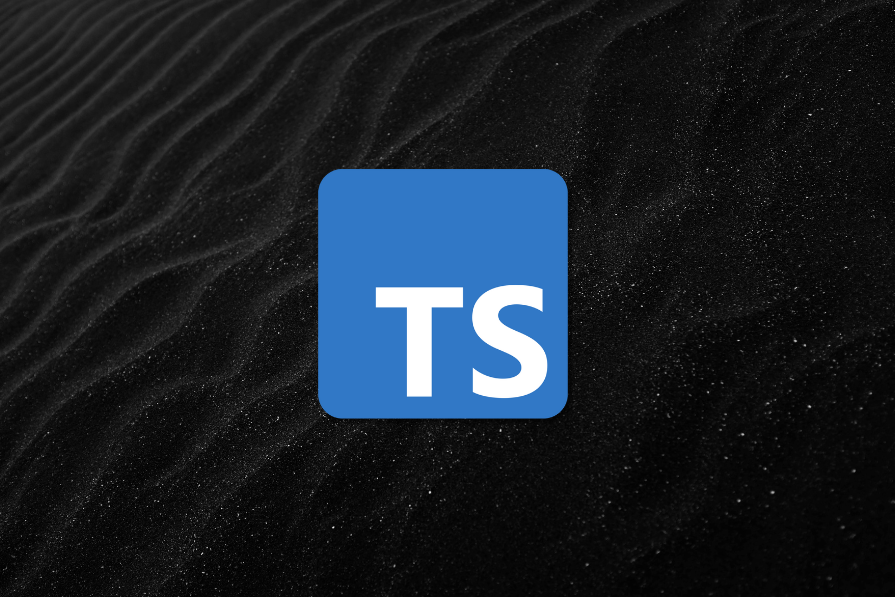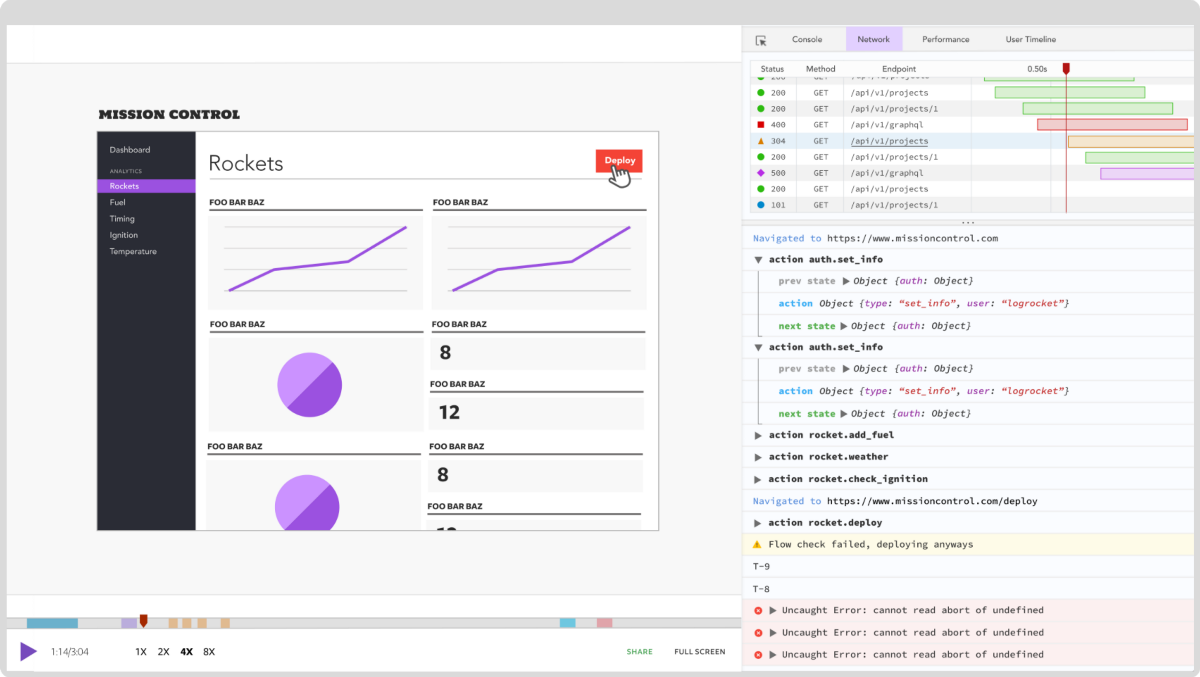
tsup is a fast and efficient, zero-configuration TypeScript bundler designed to streamline the process of compiling, optimizing, and outputting different module formats. Unlike older bundlers, tsup leverages esbuild under the hood for high-speed performance, supports modern ECMAScript modules and CommonJS(CJS), and provides built-in features like tree shaking, minification, and code splitting.

This guide walks through setting up tsup, configuring the output, and using the outExtension option to customize file extensions.
The Replay is a weekly newsletter for dev and engineering leaders.
Delivered once a week, it's your curated guide to the most important conversations around frontend dev, emerging AI tools, and the state of modern software.
tsup is a modern, fast, and zero-configuration bundler for TypeScript and JavaScript projects. It simplifies the process of bundling libraries or applications written in TypeScript or JavaScript, making it easier to produce optimized and production-ready code. tsup uses esbuild under the hood for rapid build times.
tsup is primarily used to bundle TypeScript and JavaScript projects into distributable formats. It automatically handles TypeScript compilation, tree shaking, and bundling without requiring complex configuration. It supports multiple output formats like ESM, CJS, and IIFE, making it versatile for various environments.
It’s ideal for building libraries, applications, or any project that needs to be packaged for deployment. tsup optimizes code by removing unused sections (tree shaking) and minifying output for production. It has native TypeScript support, allowing you to bundle your code directly without precompilation. Additionally, tsup can generate development builds with source maps for debugging and production-ready builds with minification.
tsup minimizes setup complexity by offering a zero-configuration approach, allowing developers to bundle TypeScript and JavaScript projects without extensive configuration files. Unlike traditional bundlers that require complex setups with multiple plugins and custom build scripts, tsup works out of the box by automatically detecting entry points, handling TypeScript compilation, and optimizing output formats. This streamlined workflow significantly reduces the time spent configuring a build system, making it easier to focus on development rather than setup.

If you’re considering alternative bundlers, check out our article “Using Rollup to package a library for TypeScript and JavaScript” for a detailed comparison.
Before bundling with tsup, start by creating a new TypeScript package. Initialize a project directory and set up TypeScript:
mkdir my-ts-package && cd my-ts-package npm init -y npm install typescript --save-dev npx tsc --init
This initializes a TypeScript package with a default tsconfig.json.
To integrate tsup into a TypeScript project, install it via npm:
npm install tsup --save-dev
Then, update the package.json file to add a build script:
{
"scripts": {
"build": "tsup"
}
}
By default, tsup looks for an index.ts or src/index.ts entry point. To specify an entry file manually, pass it as an argument. For example, if you have a main.ts file inside src/, you can define a simple function:
export function greet() {
return "Hello from tsup!";
}
Run the following tsup command:
npx tsup src/main.ts --format esm,cjs --dts
This command instructs tsup to generate both ESM and CJS outputs and includes TypeScript declaration files (.d.ts). These files are essential for TypeScript libraries because they provide type definitions that enable editors and compilers to understand the package’s API without needing access to the original TypeScript source. Manually generating these files with tsc can be cumbersome, requiring additional configurations, but tsup simplifies this by handling it automatically with the --dts flag.
For those exploring other modern bundling options, our post “Migrating a TypeScript app from Node.js to Bun” offers valuable insights on an emerging alternative.
outExtensionBy default, tsup outputs .js files for both ESM and CJS formats. However, certain environments and packaging requirements may require different extensions. The outExtension option allows renaming output files.
In a tsup.config.ts file, define:
import { defineConfig } from 'tsup';
export default defineConfig({
entry: ['src/index.ts'],
format: ['esm', 'cjs'],
dts: true,
outExtension({ format }) {
return format === 'esm' ? { js: '.mjs' } : { js: '.cjs' };
},
});
This configuration ensures that ESM outputs use .mjs, while CJS outputs use .cjs, making module resolution more explicit in Node.js environments.
Supporting both ESM and CJS in a TypeScript package is crucial for module format compatibility across different environments. ESM (ECMAScript Modules) is the modern standard, optimized for tree shaking and better performance in bundlers like Webpack and Vite. CJS, on the other hand, is still widely used in Node.js projects and older toolchains. By generating both formats, the package is flexible, allowing users to consume it regardless of their module system.
tsup simplifies this dual support by allowing both formats to be defined in a single command:
npx tsup src/index.ts --format esm,cjs --dts
This approach ensures that both modern and legacy projects can import the package without issues.
For more on the differences between ESM and CommonJS — and why these distinctions matter — see our guide on CommonJS vs. ES modules in Node.js.
tsup plays a crucial role in efficiently bundling TypeScript code. The configuration in Mappersmith’s tsup.config.ts provides an excellent example of setting up bundling for different environments, target versions, and output formats. It showcases how to define entry points, handle different build scenarios like Node.js and browser environments, and manage sourcemaps, type declarations, and minification.
The package.json script in Mappersmith integrates tsup as part of a larger build process. It begins by copying version files, running tsup to bundle the code, and finally generating type declarations. This modular approach keeps the workflow clean and focused on different aspects of the build process. The build script ties together multiple tasks, demonstrating how tsup fits into a broader toolchain.
tsup.config.ts fileFor Mappersmith’s tsup configuration, the following setup is used:
import { defineConfig, Options } from 'tsup'
import { esbuildPluginFilePathExtensions } from 'esbuild-plugin-file-path-extensions'
// Inspired by https://github.com/immerjs/immer/pull/1032/files
export default defineConfig((options) => {
const commonOptions: Partial = {
entry: ['src/**/*.[jt]s', '!./src/**/*.d.ts', '!./src/**/*.spec.[jt]s'],
platform: 'node',
target: 'node16',
// `splitting` should be false, it ensures we are not getting any `chunk-*` files in the output.
splitting: false,
// `bundle` should be false, it ensures we are not getting the entire bundle in EVERY file of the output.
bundle: false,
// `sourcemap` should be true, we want to be able to point users back to the original source.
sourcemap: true,
clean: true,
...options,
}
const productionOptions = {
minify: true,
define: {
'process.env.NODE_ENV': JSON.stringify('production'),
},
}
return [
// ESM, standard bundler dev, embedded `process` references.
// (this is consumed by ["exports" > "." > "import"] and ["exports > "." > "types"] in package.json)
{
...commonOptions,
format: ['esm'],
clean: true,
outDir: './dist/esm/',
esbuildPlugins: [esbuildPluginFilePathExtensions({ filter: /^\./ })],
// Yes, bundle: true => https://github.com/favware/esbuild-plugin-file-path-extensions?tab=readme-ov-file#usage
bundle: true,
dts: {
compilerOptions: {
resolveJsonModule: false,
outDir: './dist',
},
},
},
// ESM for use in browsers. Minified, with `process` compiled away
{
...commonOptions,
...productionOptions,
// `splitting` should be true (revert to the default)
splitting: true,
// `bundle` should be true, so we get everything in one file.
bundle: true,
entry: {
'mappersmith.production.min': 'src/index.ts',
},
platform: 'browser',
format: ['esm'],
outDir: './dist/browser/',
},
// CJS
{
...commonOptions,
clean: true,
format: ['cjs'],
outDir: './dist/',
},
]
})
In the above setup:
commonOptions contains settings that apply to all builds, such as defining entry files, targeting Node.js version 16, disabling code splitting, and enabling sourcemaps.productionOptions applies specifically to production builds, enabling minification and defining the NODE_ENV variable as production.esbuildPluginFilePathExtensions plugin and handling TypeScript declarations.outExtensionWhen generating production builds, it is often useful to append .min.js to minified files for better clarity and organization. The outExtension option in tsup allows you to modify output file extensions dynamically. Update your configuration as follows:
import { defineConfig } from 'tsup';
export default defineConfig((options) => ({
entry: ['src/index.ts'],
format: ['esm', 'cjs'],
dts: true,
minify: true,
outExtension({ format }) {
return format === 'esm' ? { js: '.min.mjs' } : { js: '.min.cjs' };
},
}));
This setup ensures:
*.min.mjs*.min.cjsThis improves clarity when distributing both development and production builds. Explicitly defining file extensions prevents ambiguity in module resolution, particularly in environments requiring strict format handling.
tsup supports multiple entry points, making it ideal for bundling libraries with several exports. To configure multiple entry points, update your tsup.config.ts as follows:
import { defineConfig } from 'tsup';
export default defineConfig({
entry: {
index: 'src/index.ts',
utils: 'src/utils.ts',
},
format: ['esm', 'cjs'],
dts: true,
splitting: true,
sourcemap: true,
clean: true,
});
This configuration compiles src/index.ts and src/utils.ts separately, enabling better modularity and maintainability in larger projects.
If your project includes static assets (such as CSS or JSON files), tsup allows you to exclude external dependencies to keep the final bundle lightweight. Use the external option to specify dependencies that should not be bundled:
import { defineConfig } from 'tsup';
export default defineConfig({
entry: ['src/index.ts'],
format: ['esm', 'cjs'],
dts: true,
external: ['react', 'lodash'],
});
This ensures that dependencies like react and lodash are referenced externally rather than bundled within the output, reducing the final file size and improving efficiency.
By leveraging these configurations, tsup provides a streamlined approach to managing multiple entry points, minified outputs, and external dependencies, making it a powerful tool for modern TypeScript project bundling.
When using tsup to bundle your TypeScript package, following best practices ensures a smooth and efficient workflow while avoiding common pitfalls. Below are key strategies to use tsup effectively:
To ensure your package works across different environments, always specify both ESM (ECMAScript Modules) and CJS (CommonJS) formats. Modern frameworks and tools often prefer ESM, while older systems or Node.js environments may still rely on CJS. Set the format option in your tsup configuration:
{
"format": ["esm", "cjs"]
}
Failing to support both formats can limit your package’s usability, so this step is essential.
.d.ts)TypeScript declaration files provide type information for users of your package. Without them, users lose type safety and IntelliSense support. Enable dts in your tsup configuration to generate these files:
{
"dts": true
}
Skipping this step can hinder the developer experience for TypeScript users.
outExtension for Node.js compatibilityNode.js has strict rules for resolving module files, requiring .mjs for ESM and .cjs for CJS. To avoid runtime errors, define the outExtension option in your tsup configuration:
{
"outExtension": ({ format }) => ({
".js": format === "cjs" ? ".cjs" : ".mjs"
})
}
This ensures Node.js correctly resolves your module files, preventing import issues.
Hardcoding paths in your tsup configuration reduces flexibility and makes setup less reusable. Instead, use dynamic options to adapt to different formats or environments. Set the outDir dynamically:
{
"outDir": ({ format }) => `dist/${format}`
}
This approach keeps your configuration flexible and easier to maintain.
Minification reduces bundle size but makes debugging difficult. Enable source maps when minifying to simplify debugging:
{
"minify": true,
"sourcemap": true
}
Without source maps, debugging minified code can be nearly impossible.
By default, tsup treats certain dependencies as external and does not include them in the bundle. If you find missing dependencies in the final output, configure the external option:
{
"external": ["react", "lodash"]
}
This ensures dependencies like react and lodash are referenced externally rather than bundled, reducing file size.
While tsup is optimized for speed, enabling certain features like source maps can impact build times. Monitor your build performance and adjust configurations as needed to balance speed and debugging capabilities.
tsup is a powerful bundler that simplifies the process of bundling TypeScript projects. Its support for ESM and CJS formats, along with features like outExtension for customized file extensions, makes it an essential tool for modern JavaScript development. By following these best practices, you can effectively integrate tsup into your workflow, ensuring efficient and production-ready builds. Whether you are focusing on tree shaking, module format compatibility, or streamlined builds, tsup provides the necessary tools for success.

LogRocket lets you replay user sessions, eliminating guesswork by showing exactly what users experienced. It captures console logs, errors, network requests, and pixel-perfect DOM recordings — compatible with all frameworks, and with plugins to log additional context from Redux, Vuex, and @ngrx/store.
With Galileo AI, you can instantly identify and explain user struggles with automated monitoring of your entire product experience.
Modernize how you understand your web and mobile apps — start monitoring for free.

Container queries let components respond to their own layout context instead of the viewport. This article explores how they work and where they fit alongside media queries.

React Server Components vs Islands Architecture: Learn how each reduces client JavaScript, impacts hydration and interactivity, and which trade-offs matter for production performance.

Large hosted LLMs aren’t always an option. Learn how to build agentic AI with small, local models that preserve privacy and scale.

What storylines defined 2025 in frontend development? We power rank them all, from AI advancements to supply chain attacks and framework breakthroughs.
Would you be interested in joining LogRocket's developer community?
Join LogRocket’s Content Advisory Board. You’ll help inform the type of content we create and get access to exclusive meetups, social accreditation, and swag.
Sign up now